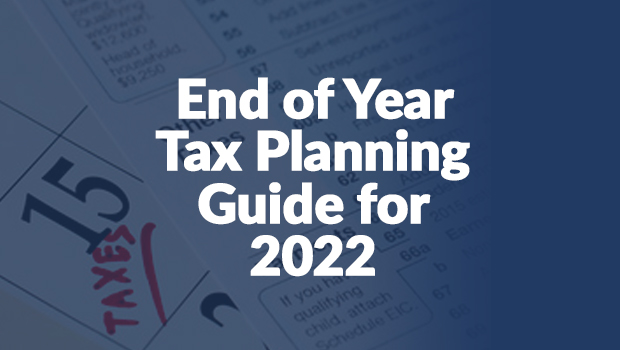The year is almost over, but the time to make financial decisions that could affect your taxes in 2022 and/or 2023 is about to begin. Below are a few tasks and considerations to look into before January 1 arrives.
Tip #1: Reconcile Health Insurance Premium Credits for Your Qualified Health Plan
If you received health insurance coverage from a qualified health insurance policy this year, you may have received premium tax credits to help pay for this insurance. But to calculate what premium credits you were eligible for, you had to provide information to estimate your 2022 income.
Most likely, your income for 2022 does not perfectly match your estimate. If you made more this year than expected, this could mean you will have to pay back some of the tax premium credits you received. If you made less, you may get extra money from the federal government when you file your taxes in 2023.
You should receive Form 1095-A early in 2023 which contains information to help with this reconciliation. However, before you receive this form, you can determine if you’ll owe extra money to Uncle Sam or if you’ll be getting something extra next year. This might be helpful to know when providing your estimated income information for your 2023 health insurance coverage with a qualified health plan.
Tip #2: Harvest Tax Losses
If applicable, you can use some of your losses from this year’s investments to offset some of your 2022 capital gains. There are limits on how much you can offset, although any excess can usually roll over to the 2023 tax year.
Be careful with this tax harvesting strategy. Any security you sell for tax loss harvesting purposes should be something you would have sold anyways, even without the tax benefit. Also, be aware of the “wash rule,” which prevents you from using this tax strategy, then quickly buying the stock back next year.
Tip #3: Beware of Online Payment Apps and Form 1099-K
Until 2022, Form 1099-K usually got generated only when you received more than $20,000 over the course of more than 200 transactions through online payment services, like PayPal or Venmo. For 2022 and the foreseeable future, the 1099-K generation threshold dropped from $20,000 to $600 and 200 transactions to just one transaction.
So if you sold an antique on eBay for $601.00 this year, be on the lookout for a 1099-K from eBay or the payment provider you used to accept payment. This is true even if you lost money on the transaction. You won’t have to pay any taxes on this loss, but you may need documentation to prove your cost basis for this transaction. And if you don’t have the documentation, be careful in 2023. You’ll want to keep careful records of any costs and expenses related to any transactions that could generate a 1099-K.
Tip #4: Take Your Required Minimum Distributions from Eligible Retirement Accounts
If you recently turned 72 and have a tax-deferred retirement account, federal tax rules may require you to begin withdrawing money from that account in the form of Required Minimum Distributions, or RMDs. Covered accounts can include traditional IRAs and employer-sponsored 401(k) and 403(b) retirement plans.
Tip #5: Inflation Adjustments to Certain Tax Provisions
For 2023, certain tax thresholds or amounts will increase due to inflation. For example, the standard deduction for married couples rises to $27,700 and the foreign earned income exclusion will be $120,000 instead of $112,000. The IRS has a handy summary of other inflation-related changes if you want to know more.
In Closing
If you have any questions or concerns about your 2022 or 2023 taxes, please reach out to your tax professional.
Kienitz Tax Law is here to help you with your tax issues. Schedule your FREE consultation today!

